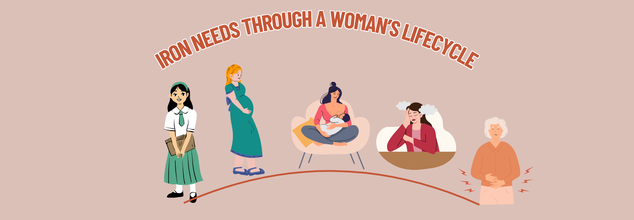- Health Conditions A-Z
- Health & Wellness
- Nutrition
- Fitness
- Health News
- Ayurveda
- Videos
- Medicine A-Z
- Parenting
- Web Stories

(Credit-Canva)
Success Isn’t Making Gen Z Happy, New Study Reveals Hidden Mental Struggle
We have all heard the phrase ‘Money can’t buy happiness’ however many people do not agree with it. A lot of the troubles they face are due to financial difficulties, so having money could actually be a reason for their happiness. However, a new study shows that while you may be flourishing in life, you may not be as happy.
A new global study suggests that true well-being, or "flourishing," goes beyond simply being happy. Researchers from Baylor and Harvard universities surveyed over 207,000 people across 22 countries and Hong Kong to understand this broader concept.
It is now more than ever a chance to look at the mental health of the current living generations and what factors could affect it.
They looked at how people are doing in areas like their health, their sense of purpose, the strength of their character, and their connections with others, alongside just how happy they report being. This broader view helps us understand overall well-being in a more complete way than just focusing on happiness alone.
What Does It Reveal About The Mental Health Of Youngsters
One of the more concerning findings of this global study was that younger adults, across many of the countries surveyed, reported lower levels of overall flourishing compared to older adults. Many young people expressed that they didn't have a strong sense of purpose in their lives, which is a key component of flourishing.
However, there were some exceptions, with countries like Tanzania and Poland showing better flourishing scores among their younger populations, suggesting that cultural and societal factors might play a significant role in this age-related trend.
Experts suggest that increased competition for good jobs in developed countries could be a source of stress for younger individuals. Additionally, while richer countries often scored higher in financial security, they tended to rank lower in areas like relationships and a sense of meaning in life.
How Is Flourishing Different Than Happiness?
Their "Global Flourishing Study" looked at six important aspects of well-being: how happy people feel, their physical health, their sense of meaning in life, their character strengths, the quality of their relationships, and their financial security. By looking at all these areas together, the study aimed to create a more detailed understanding of what it means for people to be truly thriving in their lives across different cultures and countries.
The study revealed that Indonesia ranked highest in overall flourishing, followed by Mexico and the Philippines. Surprisingly, many countries that often top the World Happiness Report, such as Sweden and the United States, scored only in the middle range for flourishing.
Researchers point out that the findings raise important questions about how economic progress can be achieved without negatively impacting people's sense of purpose, the quality of their relationships, and their character development. Some of the most flourishing countries didn't even rank high in traditional happiness reports, indicating different factors contribute to overall well-being.

From Menarche To Menopause: How Women's Iron Needs Keep Changing Throughout Life Stages?
Iron is more than a figure on a blood work report—it's the foundation of a woman's energy. From the moment menstruation begins to the final stages of menopause, a woman's need for iron isn't fixed; it varies, develops, and becomes even more essential. Underestimated and underappreciated, iron is not only vital for maintaining healthy blood but also for making energy, keeping the mind functioning, supporting the immune system, regulating hormones, and maintaining good moods. As women progress through the different hormonal stages of life, fluctuating iron levels can deeply impact their quality of life, making this mineral a non-negotiable part of lifelong health planning.
Iron deficiency is the most common nutritional deficiency on earth, and it disproportionately affects women. An estimated 38% of pregnant women and 29% of non-pregnant women around the world suffer from anaemia—most frequently resulting from iron deficiency. The World Health Organization (WHO) indicates that iron deficiency anaemia (IDA) peaks in reproductive ages, pregnancy, and early motherhood.
This is due primarily to menstruation, in which repeated monthly blood loss drains iron stores, and augmented further in instances of heavy menstrual bleeding (HMB), present in as many as one-third of menstruating women. Iron is still important even after menopause, although for other purposes—maintaining immunity, intellect, and metabolism in the absence of monthly loss.
Menstrual Years
Menstruation makes women aware of their life-long connection with iron. Every menstrual cycle, women lose approximately 30–40 millilitres of blood, which amounts to about 15–20 milligrams of iron. In individuals suffering from HMB, frequently due to fibroids, PCOS, or endometriosis—or for whom no cause is identified—the loss of iron is even greater. Unless replenished by a diet rich in iron or by supplements, the loss can cause fatigue, impaired concentration, pallor, and compromised immunity—typical manifestations of IDA.
Actually, iron lost during menstruation is in the form of haem iron, which is more bioavailable than non-haem iron from plant foods. Nevertheless, regular dietary intake is necessary.
Pregnancy and Postpartum Recovery
While pregnant, a woman's blood supply is increased by almost 50% to supply the developing fetus, placenta, and maternal tissues. This increase drastically elevates the requirement for iron. A deficiency here not only poses a risk to the mother but can influence fetal brain development, birth weight, and preterm delivery risk.
Postpartum, iron is still important. Between delivery blood loss and the iron requirements of lactation, most new mothers are struggling with fatigue and low immunity—not only from sleepless nights but because their iron stores haven't been replenished.
Menopause
Most think that postmenopause, iron is obsolete. Although the monthly blood loss ends, the body continues to need iron for metabolic processes, production of red blood cells, and immune system protection. Further, iron serves to fight off age-related muscle loss and for brain health—two of postmenopausal women's top concerns.
As per Shimpli Patil, Head Nutritionist & Lifestyle Expert, "Even without periods, iron is still essential for vitality, immunity, and brain health. Low iron levels are common in many women not only because of diet but also because of poor gut health and ongoing stress."
It's a myth that simply consuming more iron does the trick. The fact is that iron uptake is a multifaceted process, which depends on gut health, stress, and the availability of inhibitors like calcium, tea, and coffee.
"Many women nowadays are suffering from low iron not just because of nutritional deficiencies but also compromised absorption," Patil says. "So, it's not merely about consuming more iron but making sure the body is indeed absorbing it."
Foods That Naturally Boost Iron Levels
Patil advises a combination of traditional and contemporary nutrition to sustain iron levels:
Garden cress seeds (Halim/Aliv): Small but mighty, particularly when soaked overnight and eaten with lemon juice for maximum uptake.
Moringa leaves: Packed with plant iron and antioxidants.
Dark leafy greens: Spinach, amaranth, dill, and colocasia.
Broccoli: Both high in iron and Vitamin C.
Pumpkin and sesame seeds: Convenient snack ingredients with a mighty iron kick.
Wheatgrass: Rich in "green hemoglobin."
Dried fruits: Dates, raisins, and figs make excellent instant iron boosters.
Organ meats: Especially liver, when obtained responsibly.
Tips to Maximize Iron Intake
To make the most of your iron-rich foods:
- Always combine iron sources with Vitamin C (consider: lemon juice, oranges, amla) to maximize absorption.
- Avoid tea, coffee, and milk an hour before or after an iron-rich meal to avoid interference with absorption.
- Consider supplements if you are at high risk or have a diagnosed deficiency, under medical guidance.
Why Iron Count Is About More Than Numbers?
"Iron isn't only about lab tests. It's about energy, clarity, healthy hair, radiant skin, and bouncing back," states Patil. "Healing occurs when we feed with simple, seasonal foods, and care for the gut."
Women need to be in charge of their iron requirements at all stages—by tuning into their bodies, seeing experts, and making informed food choices. And for goodness' sake, iron isn't all about blood—it's the building block of life and health for every woman.
Ms Shimpli Patil is the Head Nutritionist & Lifestyle Expert at Luke Coutinho Holistic Healing Systems (LCHHS) in India

What Is 'Ozempic Mouth' The New Bizarre Side Effect Of The Popular Weight-Loss Drug?
After finally shedding those stubborn pounds with the help of a miracle drug—only to look in the mirror and hardly recognize your reflection. That’s the unexpected twist many users of Ozempic, the wildly popular weight-loss and diabetes medication, are now facing. From Hollywood red carpets to everyday clinics, this injectable GLP-1 drug has become the go-to for quick body transformations. But there's a catch—while your waistline may shrink, your facial features might too. Say hello to “Ozempic mouth,” a bizarre new side effect that's raising both brows and concern. As more patients report sagging skin, hollow cheeks, and deep mouth wrinkles, the question arises: Is the cost of weight loss more than just financial?
Originally designed as a treatment for type 2 diabetes, the drug's active ingredient, semaglutide, mimics the GLP-1 hormone to regulate blood sugar and suppress appetite. But as its off-label use for rapid weight loss explodes in popularity — especially among celebrities — so do the concerns about its unintended consequences.
The latest? A perplexing and increasingly common condition dubbed “Ozempic Mouth.”
Much like its predecessor “Ozempic Face”, which made headlines for causing gaunt, hollowed facial features, Ozempic Mouth refers to a very specific set of cosmetic changes — sagging skin around the mouth, deepened folds at the corners of the lips, increased vertical wrinkles, and drooping along the chin and lower face. The result is a prematurely aged look that’s difficult to reverse without cosmetic intervention.
What is ‘Ozempic Mouth’?
The popularity of GLP-1 drugs like Ozempic, Mounjaro, and Wegovy has surged across the US and globally. Recent 2024 data suggests that as many as 1 in 8 Americans have tried a GLP-1 agonist — a number expected to climb as these medications become more accessible and culturally normalized.
But as weight comes off quickly, it doesn’t always do so evenly — and therein lies the problem. Semaglutide doesn’t distinguish between fat deposits. It targets subcutaneous fat — the layer just beneath the skin that gives the face its youthful plumpness. While shedding belly and thigh fat may be welcome, losing fat in the delicate perioral region (around the mouth) leads to a sunken, drawn-out appearance.
The skin becomes thinner and more wrinkled, with what many are calling ‘lipstick lines’. Patients come in alarmed by how aged their face suddenly looks — particularly around the lips and chin.
Celebrities like Sharon Osbourne, Whoopi Goldberg, and Rebel Wilson — all of whom have openly discussed their Ozempic use — have been spotted with increasingly pronounced facial changes. Fans have noted visible differences: sharper jawlines, sagging cheeks, and tight-lipped smiles that hint at underlying volume loss.
This rapid facial transformation has made “Ozempic Mouth” a buzzword in dermatology offices across the globe, with patients urgently seeking remedies to counteract the unintended side effect of their newly slimmed-down physiques.
To combat the effects of Ozempic Mouth, many are turning to dermal fillers — injectable treatments that restore volume, reduce wrinkles, and add subtle plumpness to the skin. According to experts, filler procedures have tripled in the U.S. in the past decade, with 5.3 million performed in 2023 alone, up from 1.8 million in 2010.
Fillers can smooth the appearance of wrinkles and add fullness back to areas like the lips, nasolabial folds, and chin but these fixes don’t come cheap — with treatments ranging from $700 to $2,000 per syringe, depending on the provider and location.
Another alternative growing in popularity is Thermage, a non-invasive radiofrequency treatment that tightens the skin by stimulating collagen production. While not immediate, the results typically become visible in four to six months and can last up to two years.
Thermage works best when used as a preventative, ideally, people on Ozempic should start the treatment early in their weight-loss journey to minimize skin laxity.
Other Strange Ozempic Side Effects
“Ozempic Mouth” is just one of several strange new phenomena reported with GLP-1 medications. The broader term “Ozempic Face” describes the sunken appearance seen in the cheeks, under eyes, and temples — and now “Ozempic Feet” and “Ozempic Butt” are entering the lexicon.
Ozempic Feet refers to skin laxity and thinning skin on the tops of the feet, sometimes making bones more pronounced and shoes uncomfortable. Meanwhile, Ozempic Butt describes the sudden disappearance of fat from the buttocks, leaving some users self-conscious about their drastically altered silhouettes.
"I can feel every bone in my backside now,” one user confessed on a social forum, echoing a growing concern among rapid weight-loss patients.
GLP-1 drugs like Ozempic have revolutionized weight-loss treatment, giving hope to many struggling with obesity and related health conditions but as the aesthetic consequences of these medications become more visible, especially among public figures, experts are urging caution.
This is a medical therapy — not a beauty shortcut, warn experts. Rapid weight loss always has a physical cost. Understanding how it affects your body, especially your face, is key to setting realistic expectations.
As with any medical intervention, the decision to start a GLP-1 drug should be made in consultation with a licensed healthcare provider — with full knowledge of both the benefits and the very real, sometimes bizarre, side effects.

(Credit-Canva)
Loving Partners Can Manage Chemotherapy ‘Brain Fog’ For Cancer Patients, Study Finds
Going through chemotherapy can be very difficult for one’s body. To get better, chemo patients get sick regularly to ensure they get better. The Cleveland Clinic explains that side effects of chemo happen as the medicine used to destroy cancer cells can also often affect healthy cells. People experience extreme fatigue, nausea, hair loss, loss of appetite, weakened immune system etc. One of the reassurances is that normal cells can repair themselves allowing your body time to recover.
Another side effect of the treatment is the ‘brain fog’. According to the Mayo Clinic, it is characterized by trouble thinking and creating memories during and after the treatment. Some other symptoms of brain fog include trouble recalling what you’ve said to others or seen particular images and short-term memory loss issues. Experts do not know the cause of this side effect.
However, a new study revealed that having a loving and devoted partner can drastically improve brain fog symptoms in chemo patients.
A Partner’s Role In Chemo Management
Published in the Psychoneuroendocrinology journal, the research found that patients who reported having a fulfilling and happy intimate relationship were more likely to maintain their cognitive abilities and experience less of the mental fogginess often associated with chemotherapy treatment.
Based on their findings, the researchers suggest that therapy focused on strengthening the quality of a patient's relationship with their partner might be a helpful way to improve how well they handle the impact of chemotherapy on their thinking and memory skills.
For the study, researchers followed 48 women with breast cancer who were participating in a larger investigation looking at how chemotherapy affects the gut and brain. These patients underwent tests to assess their verbal skills, attention span, and short-term memory both before and after chemotherapy.
Satisfied Relationship = Preserved Brain Function
The key finding was that the more satisfied patients were with their relationship with their partner, the better their brain function held up while they were undergoing chemotherapy. This suggests a strong protective effect of a positive intimate connection on cognitive abilities during this challenging treatment period.
While general social support from friends and family also seemed to offer some benefit, the researchers noted that the link between a highly satisfying relationship and protected brain function was stronger and more consistent. This led them to believe that the intimate partnership is the most crucial social connection for cognitive well-being during chemotherapy.
Love Can Affect Chemo Treatment
The study also revealed that chemotherapy has an impact on the hormone oxytocin, often referred to as the "love hormone." Researchers found that levels of oxytocin in the blood significantly decreased while patients were receiving chemotherapy but returned to normal after the treatment was completed.
This temporary drop in oxytocin levels suggests that chemotherapy might be affecting the hypothalamus, which is the area of the brain responsible for producing this hormone that plays a role in social interactions and various other bodily functions.
Overall, the researchers concluded that supporting the intimate relationships of cancer patients through couples therapy could be just as important as providing other forms of support, such as support groups specifically for chemotherapy patients.
© 2024 Bennett, Coleman & Company Limited

